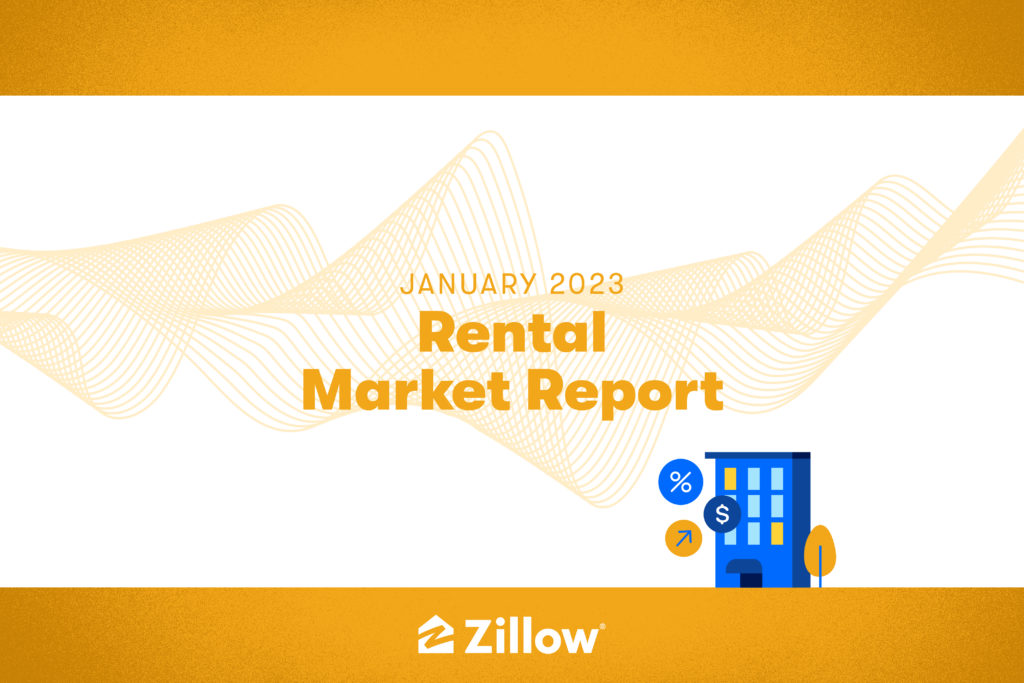Rents Inch Barely Downward To Start the New Year (January 2023 Rent Report)


Asking rents fell by just $1, or less than 0.1%, from December to January, after three months of declines of the Zillow Observed Rent Index to close out 2022. Typically, rents begin to rise slightly at this time of year, but rental market demand today remains cooler than in comparable months before the pandemic. Typical asking rents at the national level now stand at $1,970, which is 6.9% higher than one year ago, but 0.8% below the peak of $1,987 observed in September 2022.
The steepest monthly declines in rent were observed this January in Salt Lake City (-1.0%), Jacksonville (-0.8%), New Orleans (-0.6%), Seattle (-0.6%), and San Diego (-0.5%). This continues a trend of mostly Western cities, plus New Orleans, having the largest rent drops this winter. The drop in Jacksonville is notable, after its rents were among the fastest growing earlier in the year.
Rents rose the most on a monthly basis in Louisville, Ky. (0.9%), Buffalo (0.8%), Memphis (0.5%), Virginia Beach (0.3%) and Houston (0.3%). These diverse cities around the country have little in common, aside from being relatively affordable, and mostly medium-sized rather than top-10 sized cities (aside from Houston).
Rents are roughly right where they were last January in several Inland West markets. On a year-over-year basis, rents are down 1.0% in Las Vegas, and barely up at all in Phoenix (1.1%), Sacramento (2.1%), Baltimore (2.6%), and New Orleans (2.8%). The first 3 are examples of markets cooling back down ever since overheating in 2021, partly thanks to outbound coastal California movers earlier in the pandemic. The latter 2 are markets with persistently low recent growth.
Annual rent growth was highest in Louisville (10.1%), Cincinnati (10.0%), Indianapolis (9.8%) Miami (9.6%), and Buffalo (9.2%), reflecting the continued strength of demand in affordable, mid-sized Midwestern and Great Lakes metropolitan areas, as well as tail end of Miami’s remarkable boom. This is the first time since April 2021, or 20 months ago, that Miami’s year-over-year rent growth was below a double-digit pace.
The most expensive major market is San Jose, where typical monthly rent is $3,173, followed by San Francisco ($3,069), New York ($3,065), San Diego ($2,966), and Boston ($2,948).
The steady cooldown of market asking rents measured by the Zillow Observed Rent Index stands in contrast to the apparent acceleration of the annual growth of the Consumer Price Index for Rent of Primary Residence. CPI for Rent of Primary Residence rose 8.6% from one year earlier, hotter than its 8.3% year-over-year growth rate in December, and substantially higher than the 6.9% annual change in ZORI this month. Mainly because CPI measures rents paid by all tenants, not just new tenants paying the current asking rent, its growth tends to lag market asking rents by about one year, so as of January, it is still rising rapidly and setting new multi-decade highs for annual growth.
The deceleration of ZORI growth starting in March 2022 suggests that CPI-Rent growth will likely start to decelerate sometime in the first half of this year. When it happens, that will be welcome news for market observers including the Federal Reserve’s Federal Open Market Committee, which is seeking to rein in inflation by tightening monetary policy. Until then, it appears that the rising cost of rent will contribute an outsized share to the growth of overall consumer prices.